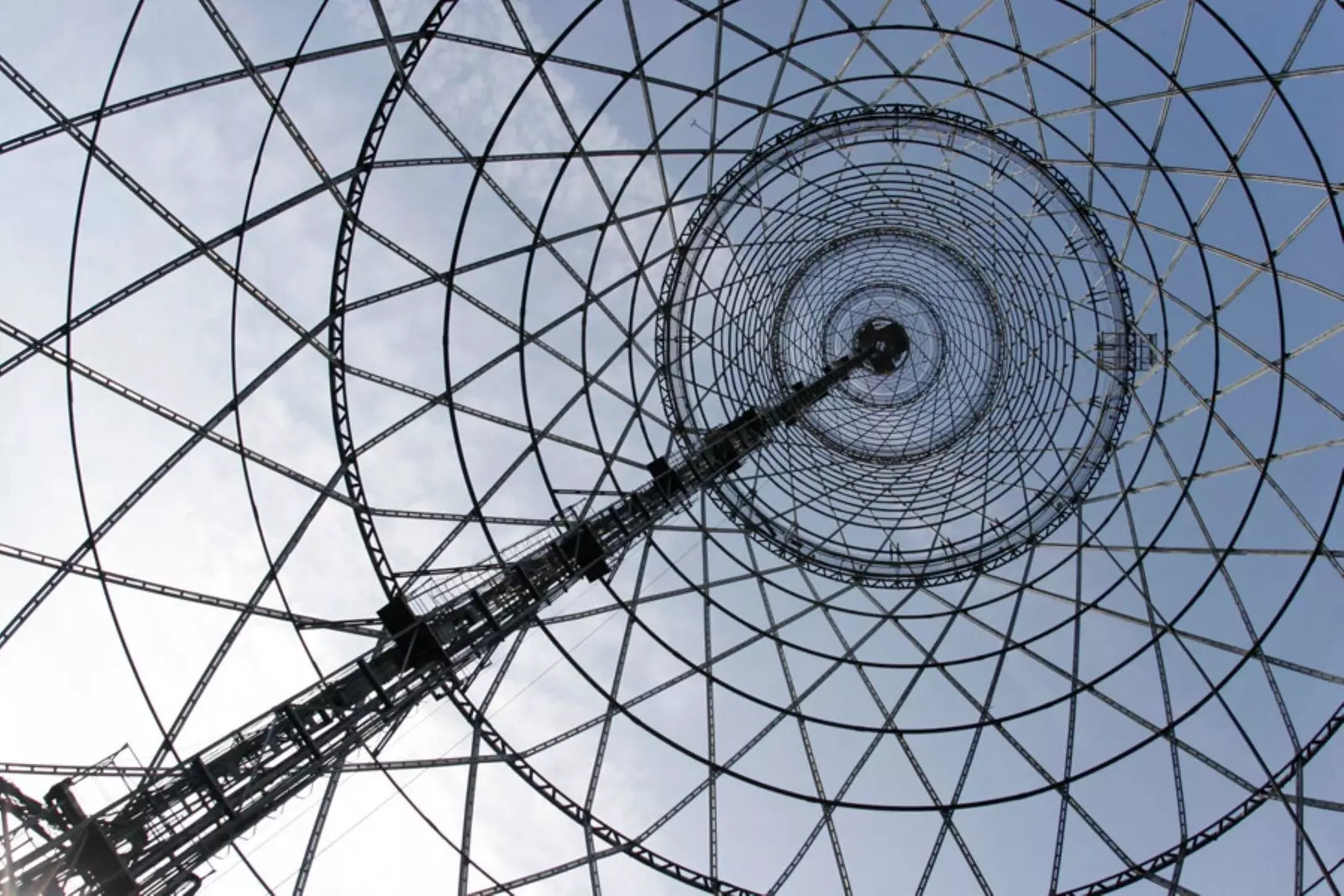
Shukhov Tower, designed by Russian engineer Vladimir Shukhov
That "architecture is the great book of humanity", as Victor Hugo said, is clearer in Russia than in any other country. Their cities, mutants and without any type of contemplation for their past, come to overlap in the same avenue layers of a story full of unpredictable compliments.
For this reason, saying "Soviet architecture" is like saying Latin American literature or European gastronomy. The register is so wide and encompasses such a number of styles, that grouping it under a single collective name may sound like saying that everything that comes from Asia is Chinese. The risk of sounding like a brother-in-law is high and that of, consequently, underestimate the heritage that the USSR brought to architecture, it is even more so.
The next series begins in the simplest way: at the beginning. Geographical, theoretical or stylistic divisions could be drawn, but given the pattern of aesthetic criteria established by Moscow and the important role that art played in the ideologization and cultivation of society, The different stages that the Soviet command went through also defined the schemes that would govern the conception of buildings and urban spaces.
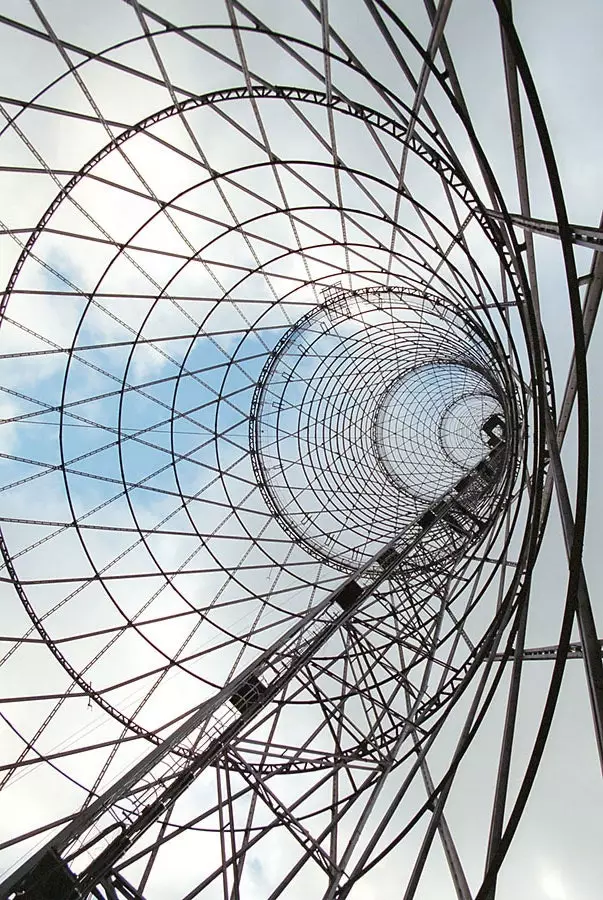
Shukhov Tower, Moscow
If in politics the October Revolution changed the world ideologically, in the artistic sphere the convulsion was so great that nothing would ever be the same again. We talk about the vanguards. In 1919, Kandinsky, Malevich and Rodchenko met at 14 Boljonka Street in Moscow to create the world's first contemporary art museum.
It was about putting in value the Russian painters of the time, their technical, chromatic and conceptual innovations, but above all they proposed establish this revolutionary art as a priority for the government in formation.
Since then, these two revolutions have gone hand in hand and, despite the hardships that a country in civil war was going through, Various national curators were set up that transferred the artistic and political vision to the planning of the lives of citizens.
The most important of them were O.S.A. and Vkhutemas, a parallel movement in form and substance to the German Bauhaus, and whose intention was defined by Lenin himself at its inauguration: "prepare master artists of the highest qualifications for the industry, builders and administrators of technical-professional education."
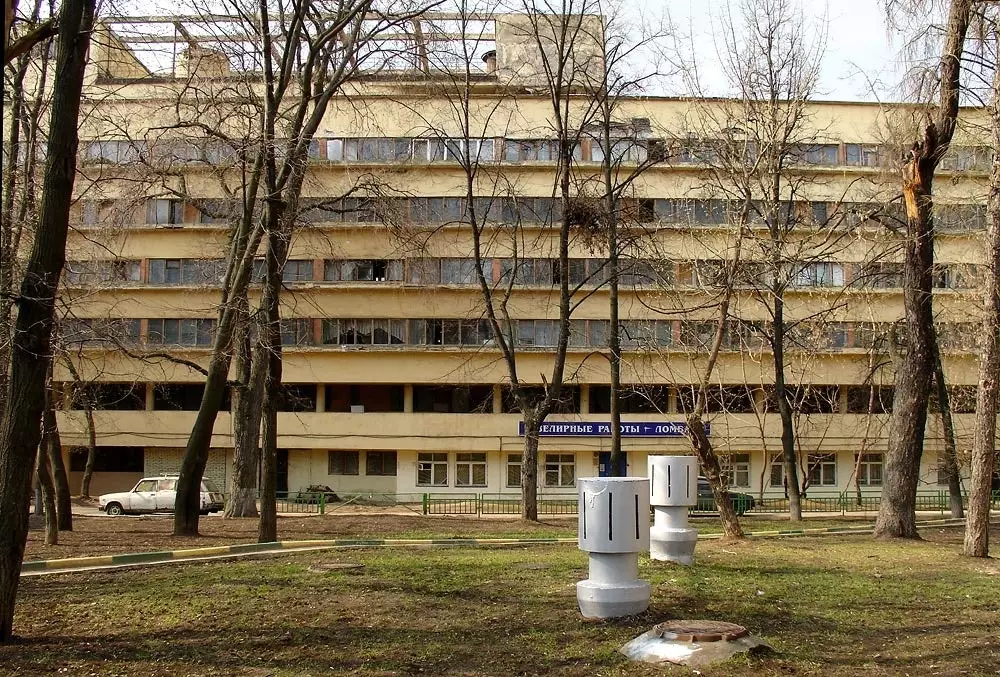
The Narkomfin building before its restoration
The ideology must be implanted from the foundations, they thought. And there, Suprematism, Cubism, Rayonism, Futurism... crystallized in the architectural movement of the constructivism, or "construction art" (and often framed within the rationalist current).
And how to apply these isms to a non-abstract construction? They not only had to find the answer to this question through sculpture, but also it was essential to give it a sense of movement, of progress, key to the mechanics of a society whose industry was a fundamental vector.
The premise stipulated doing it systematically and not through intuition. Hence the honesty of the facades, which revealed the entrails of the building, with no more frills than those structurally necessary.
The Shujov tower, in Moscow, anticipates the aesthetic overturn that exteriors would take, and whose interiors had to reorganize the private and social life of its tenants. One of the best examples was the Narkomfin house, one of the first communal houses that was recently restored after decades in ruins.
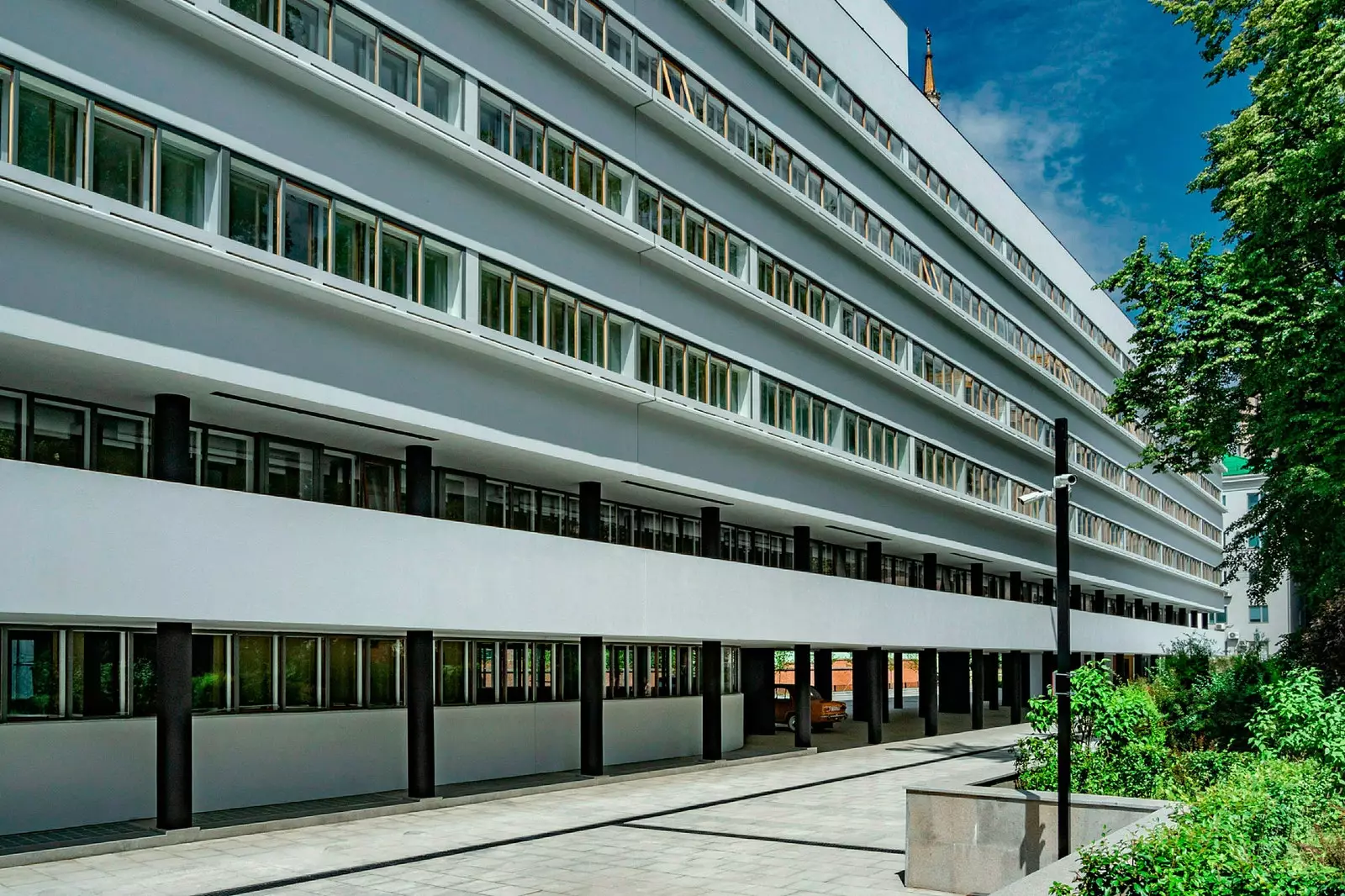
Narkomfin Building, on Novinsky Boulevard, Moscow
your architect, Moisei Ginzburg applied in 1929 to the letter the five pillars of architecture that Le Corbusier had defined only two years earlier and that would sustain the great Soviet urban development plans until the 1980s; recognizable by the naked eye a ground floor raised on stilts and continuous facades. The kitchens, separate from each apartment, were intended to stimulate greater social life and the real emancipation of women.
Narkomfin is the most representative building of the movement, far above the few works that were executed by Ginzburg in the Soviet Union, being the Almaty University (Kazakhstan) one of the most outstanding.
But if there is a proper name, an architect who left a mark on the capital in the 1920s, that was Konstantin Melnikov. In his residence, a lesson in itself of distribution of spaces, talks on current architecture are given, with special emphasis on the dissemination of Melnikov's own work.
Other of his constructions are still in use in Moscow, such as the Svoboda Factory, the Intourist garages or the Rusakov Club, for cultural events. In addition, in the center of the city buildings such as the headquarters of the Izvestia newspaper or the Mosselprom building, in the Arbat neighbourhood.
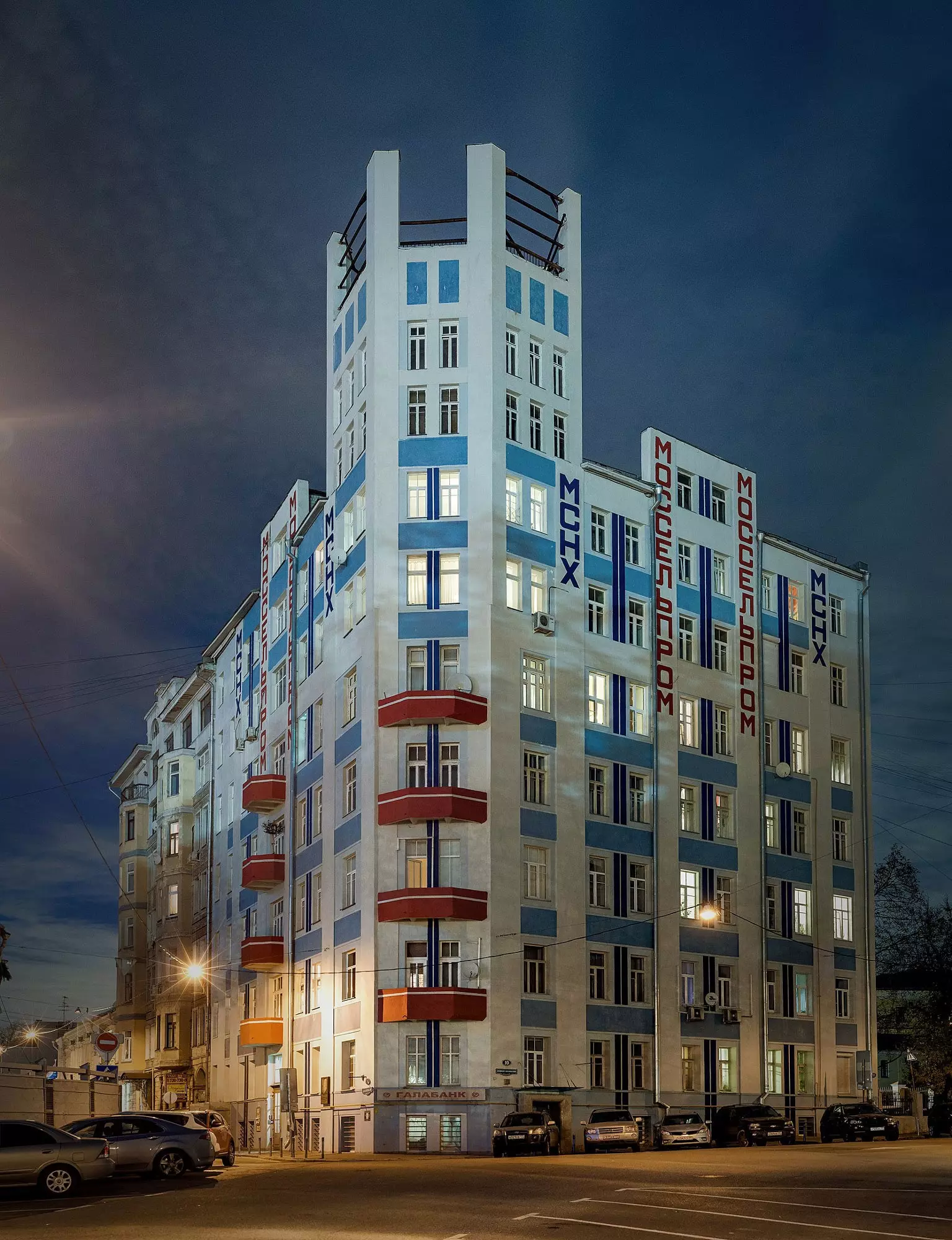
Mosselprom building, in the Arbat neighborhood
Constructivism would leave its mark on cities like Saint Petersburg, Minsk or Samara (then Kuibyshev), but you have to go much further to find one of the best preserved concentrations of this style: a the capital of Siberia, Novosibirsk.
City founded in 1893, it developed above all from 1917, with the logical weight of avant-garde architecture in the 1920s and early 1930s.
Due to its strategic location, it was highly industrialized and is still today the third largest city in Russia, whose humanity is written in "the building of 100 floors", the school of chemistry, the Gosbank bank, the Aeroflot house or the business center. Yekaterinburg follows in its wake, with up to 40 highly appreciated Constructivist works.
If Le Corbusier laid the foundations for modern architecture, it was paradoxically in his first contact with the Soviet Union when this current began to give its last blows in the country.
So let's consider building the Soyuz Center like a zenith, a turning point. It is, in fact, in the middle of a golden mile for Moscow constructivism, since a few meters away are the Ministry of Agriculture and the (then) National Commissariat of communication lines.
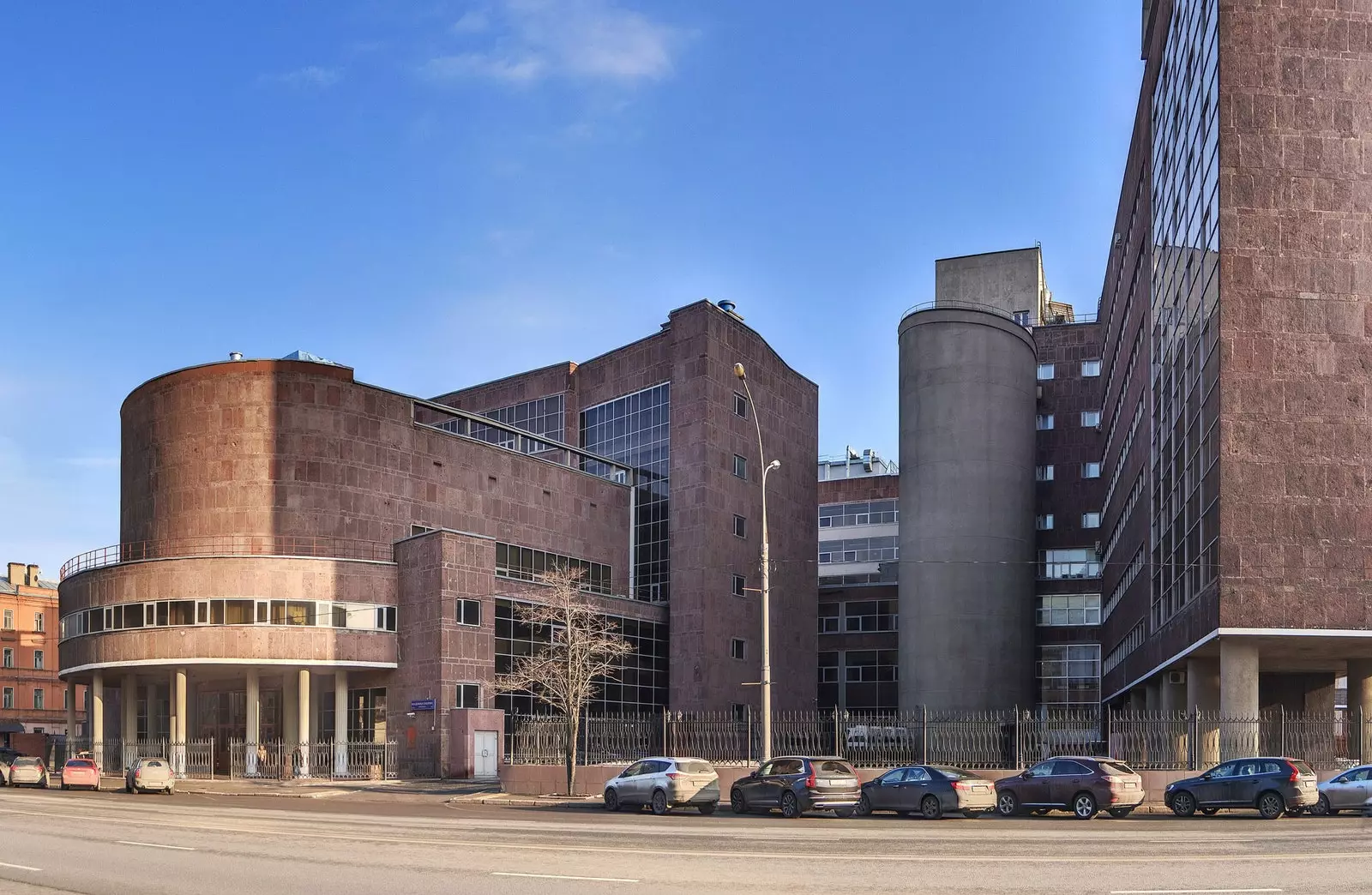
Soyuz Center, the turning point
The positive impressions he got from the city led him to design one of his quintessential projects for the international competition he was looking for. the flagship building of the "dictatorship of the proletariat": the Palace of Soviets.
It was one of the first times that a multipurpose building divided into different pavilions was conceived, with a spatial distribution that did not depend on the vertical and that contributed to developing an urban environment with a much more landscape conception...
What happened after? At the institutional level, the theory of the Leninist reflection was imposed, which led the arts towards the so-called socialist realism. The members of Vjutemas and O. S. A. were then perceived as enemies and both organizations lost their support.
The rejection of projects such as those by Mosei Ginzburg, the expressionist Erich Mendelsohn, Le Corbusier or Walter Gropius (founder of the Bauhaus) for the Palace of the Soviets is the turning point that marks this change in criteria. To such an extent that these last two sent an angry letter to Stalin, pestering the election of this megalomaniac idyll, 75-meter Lenin included.
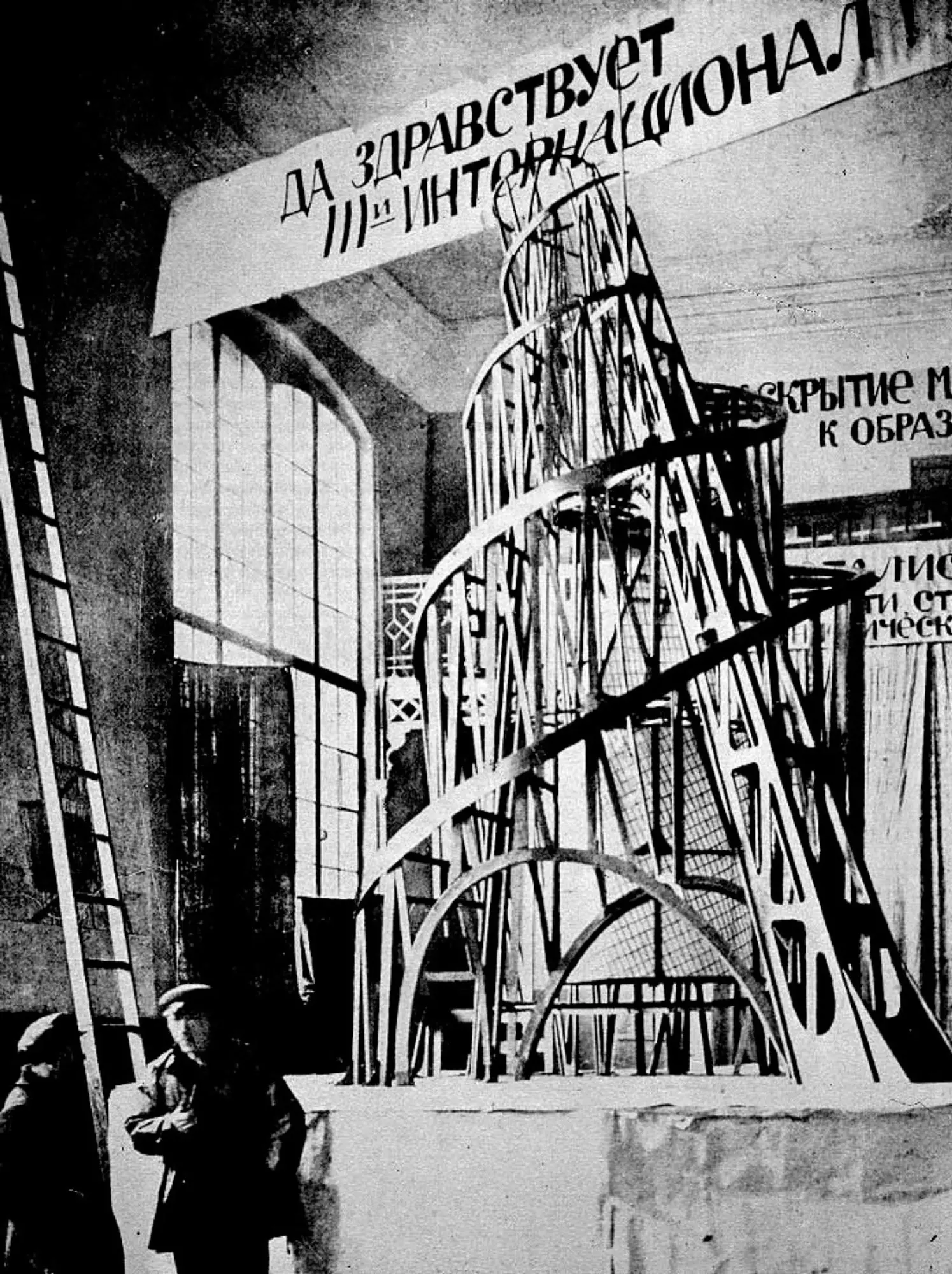
Model of the Tatlin Tower, 1919
WHAT REMAINED ON PAPER
In fact, just like the Revolution, this artistic reinvention was both accomplished and frustrated. Soviet architecture, more than any other, ended and began on paper, to the point that some of his fundamental projects (in terms of the impact they will end up having) remained in the blueprints.
This was the case with the proposals for the aforementioned Palace of the Soviets, but it had already happened before to its two greatest exponents in the theoretical field: ElLissitzky and Tatlin. The first, with its horizontal skyscrapers or the famous Lenin tribune.
The second, with the original work of Vjutemas: the tower to the Third International, a metal structure within which three pavilions rotate at different speeds, representing the three powers that supported the Soviet State: executive, legislative and, surprisingly, informative. Currently, there is a replica to scale in the New Tretyakov Gallery in Moscow.
And what happened to the Palace of Soviets? Once the work began, the inopportune visit of the Nazis in the year 41 redirected any resources of the state to war. What was to be the most iconic of the eight skyscrapers planned by Stalin, was left in a large hole in the middle of the city, converted for decades into an outdoor pool.
Bogged down, this is how avant-garde architecture remained until the 70s. In this great black hole and with the other seven skyscrapers, the next article begins precisely.
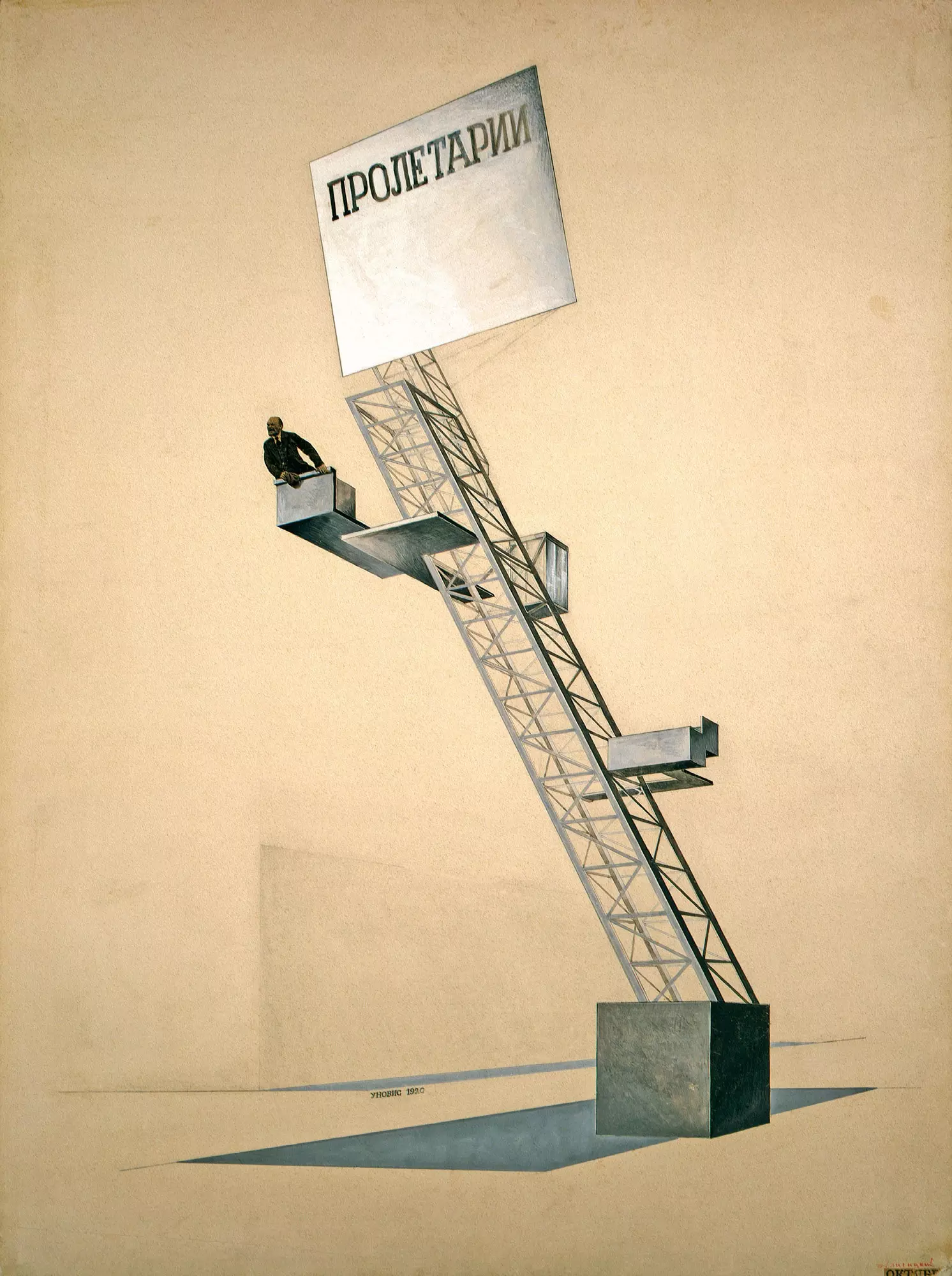
'Lenin Tribune', El Lissitzky, 1920. State Tretyakov Gallery, Moscow
